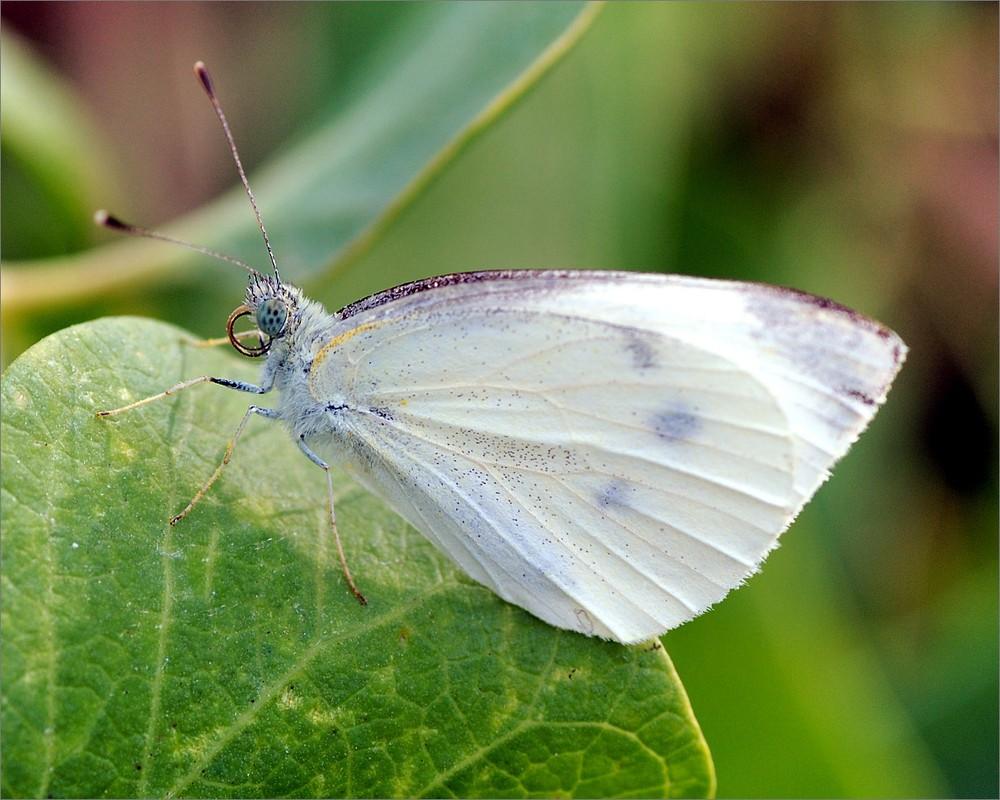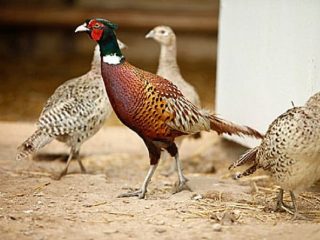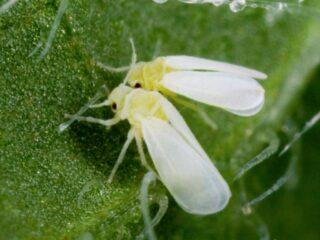Content
The cabbage butterfly is a well-known and widespread dangerous pest. It affects all varieties of cabbage and other cruciferous plants, such as radishes and turnips. You can fight it with both folk remedies and chemicals. The most effective methods, as well as basic preventive measures, are described in this article.
Description of the cabbage butterfly
The cabbage plant is quite large. The wings reach a span of 50-65 mm. Moreover, females are slightly larger than males. They also differ in a more pronounced dark pattern on the wings. The cabbage head is round in shape, the eyes are without pubescence. The antennae are quite long and light in color. Yellowish hairs are visible on the chest, which remain from the caterpillar development stage.
The front wings of cabbage birds are shaped like a right triangle. The hind wings are round-oval in shape and have two anal veins. The color of the wings is pure white, with a powdery tint. In this case, the upper part of the front wing is painted dark brown.
On the surface there are 1-2 spots of the same color on each front wing (left and right).

On the reverse side, the cabbage wings are greenish (in females) and yellowish (in males)
The photo shows that the cabbage butterfly caterpillar is yellow-green in color. A pattern of black spots of various shapes is clearly visible on the body. Also, short light hairs are visible on the cabbage plant. The caterpillars are quite large, reaching 30-60 mm in length, and have eight pairs of legs. At first, young individuals remain motionless and stick together. Then they crawl away and feed on cabbage leaves.

Cabbage caterpillar on a plant leaf
What do cabbage butterflies eat?
Butterflies and caterpillars harm all varieties of cabbage - white cabbage, cauliflower, broccoli and others. They also feed on other cruciferous vegetables and leaves of other crops:
- radish;
- radish;
- turnip;
- swede;
- horseradish;
- turnip;
- rape;
- mustard;
- garlic.
In Dagestan and neighboring regions, insects often attack capers. Flower crops, such as nasturtium, also suffer from cabbage infestations. Insects feed on the leaves of shepherd's purse, woad and wild cabbage.
Stages of development of the cabbage butterfly
The period of butterfly activity begins in April and ends in September. The number of complete development cycles depends on the climatic characteristics of the regions. For example, in the middle zone, including the Moscow region, butterflies go through two full cycles, and in the southern regions - three. At the same time, the population reaches its peak from July to August; it is at this time that the largest invasion is observed.
One development cycle consists of four stages:
- Active summer period.
- Egg stage.
- Larva.
- Mature caterpillars.
Active years
The first butterflies begin to fly at the end of April and early May, although in the south they appear already at the end of March. Almost immediately the butterflies begin to mate. Moreover, only one female and one male participate in the process (monogamous mating type).
After this, the butterflies make clutches, which consist of 200-300 eggs. They are hidden on the underside of leaves of cabbage or other plants. Adults live only 25-30 days, feed on flower nectar, extracting it using a special proboscis.
Egg
The butterfly eggs are lemon-yellow in color and elongated in shape, resembling skittles. The larvae hatch from them in 3-16 days (depending on the weather). The main sign of imminent emergence is the black color of the larvae, due to which they are clearly visible under the cover of an almost transparent egg.
Larva
Butterfly larvae develop in two to five weeks. Moreover, during this time they grow quickly and molt four times (every 4-7 days). Newly hatched larvae have a bright ocher color, which then turns yellow-green. There is a longitudinal light stripe on the back, and several yellow stripes on the sides.

Butterfly larvae are very voracious
The larvae completely gnaw off the leaves, turning them into a skeleton of veins. At first, the insects stick together, then spread out and lead a solitary lifestyle. Next, cabbage butterflies penetrate the upper leaves and reach the heads of cabbage, making deep holes in them. At the same time they feed on pods, flowers and seeds.
Because of this, all types of cabbage suffer, as well as radishes, rapeseed, rutabaga and other crops.At the end of the cycle, cabbage butterfly larvae reach a length of 60 mm, but a minority survive to this stage, since many of them become prey for birds and other natural enemies.
Caterpillar
When the larvae of the cabbage butterfly reach the mature stage and turn into caterpillars, they go into the surface layer of the soil, hiding on trees, fences, and under stones. In the shelter, the caterpillars begin to weave a cocoon in the form of an angular yellow-green formation.
This stage lasts 1.5-2 weeks, after which the cocoon opens and the caterpillar turns into a cabbage butterfly. Some individuals remain to spend the winter in the shelter - after this, from the end of March to the beginning of May, adult cabbage butterflies appear again, and the cycle repeats.
What harm does
Cabbage butterflies feed on the leaves of cabbage and other members of the cruciferous family. They literally gnaw them completely, leaving only skeletons. However, they do not limit themselves to this - they make holes in the heads of cabbage and feed on the inflorescences. Because of this, cabbage butterflies cause great damage, manifested in the following consequences:
- productivity decreases;
- plants lag behind in development;
- the risk of infections increases;
- The heads of cabbage do not set well and grow small.
At the caterpillar stage, cabbage butterflies are also dangerous for poultry (chickens, geese, ducks). Their tissues contain toxic substances that can lead to poisoning. The liquid released may cause irritation to human skin.
In addition, they are unpretentious, capable of overwintering even at extreme temperatures, after which adult butterflies appear in the spring.

Cabbage butterflies significantly reduce cabbage yields
Reasons for appearance
It is not possible to completely protect yourself from insects, since they live everywhere in Eurasia and North Africa. In the east, the range reaches Japan. The main reasons for their appearance are the planting of crops attractive to insects:
- cabbage of all varieties;
- radish;
- horseradish;
- radish;
- mustard and others.
Other reasons for the appearance of cabbage butterflies include:
- lack of preventive treatments;
- features of the ecosystem (small number of birds and other natural enemies);
- an objective factor is a population explosion: this is the name given to the phenomenon of a sharp increase in numbers, which is observed every 3-5 years.
Methods to combat cabbage
You can fight the cabbage butterfly in different ways. Most often, summer residents treat their plantings with folk remedies or chemicals. You can also use biological methods to destroy the pest.
Biological
Biological methods include the use of natural enemies of the cabbage butterfly:
- Small bellies.
- Trichogramma.
These insects actively destroy cabbage caterpillars, preventing them from creating a cocoon and turning into butterflies. Moreover, they are very small: for example, Trichogramma grow by only 1 mm. They lay eggs directly into cabbage clutches, which leads to the death of the larvae. Trigograms are also useful because they fight all other common pests (70 species of insects).
Smallmouths are also fairly small insects. They can fly, land on the surface of the caterpillar's body and pierce it with their proboscis. Then they lay the eggs directly into the body, which leads to the death of the pest. This is a very effective method that allows you to destroy up to 90% of the number of cabbage butterflies.
Along with the use of natural enemies, this group of control methods includes the use of biological agents. Unlike chemical ones, they do not contain harmful substances. The main ones are bacterial cultures that destroy pests.
According to the experience of summer residents, the best results in exterminating cabbage butterflies are given by the following means:
- "Aktofit";
- "Bitoxibacillin";
- "Fitoverm";
- "Lepidocide";
- "Vermicide."

"Fitoverm" helps cope with butterflies and other pests of cabbage
Chemical
Chemicals are the main method of controlling cabbage weeds, as well as caterpillars. Various preparations are used for treatment; the most effective are:
- "Aktellik";
- "Karbofos";
- "Spark";
- "Kinmiks";
- "Karate".
It should be understood that chemicals are used only in advanced cases, when the invasion is very strong. If heads of cabbage have already begun to form, the preparations should not be used. It is better to use biological or folk remedies.
Folk remedies
Folk remedies are not as effective as chemicals. But they are completely safe and can be used at any stage of cabbage growth, even during the formation of heads of cabbage. To destroy as many cabbage butterflies as possible, it is recommended to use the following recipes:
- Pharmaceutical valerian solution – 1 standard bottle of 3 liters. The liquid is poured into a spray bottle and processing begins. Cabbage butterflies and caterpillars are afraid of the persistent smell, and the invasion stops.
- Infusion based on pine needles - take pine needles (200 g), pour 2 liters of boiling water and infuse for a week. Then filter, bring to a total volume of 10 liters and begin treatment against the cabbage butterfly.
- Another good remedy is an infusion of a mixture of herbs (yarrow, wormwood, burdock in equal quantities). Take the leaves, crush them and fill a standard bucket one-third full, pour boiling water over it and leave for two days.
- An infusion of wood ash helps to cope with the cabbage butterfly - 200 g per 10 liters. You need to infuse it in hot liquid for 1-2 days, then add 2-3 tablespoons of liquid soap and start spraying.
- To combat the cabbage butterfly, you can use a decoction of mustard. Take 100 g of pharmaceutical powder, infuse it in 10 liters of hot water for two days and begin processing.
- You can also destroy the cabbage butterfly using tobacco dust. It is simply sprayed onto damaged foliage. Do the same with baking soda.

It is better to destroy cabbage butterflies at an early stage of invasion using folk remedies
Prevention measures
The main preventive measure, which must be observed almost constantly, is a thorough inspection of the cabbage, especially the lower leaves. If you notice a clutch of cabbage butterflies or the first holes appear on the foliage, you should immediately begin to destroy the pests.
To avoid a severe invasion and minimize risks, it is recommended to follow other rules of prevention:
- Remove weeds in a timely manner, especially from the cruciferous family (colts, mustard).
- If you find clutches of cabbage butterflies on fences and other buildings, wash them off with strong pressure of cold water.
- Divide beds with cruciferous and other crops, for example, tomatoes, eggplants.This helps prevent severe cabbage butterfly infestations.
- Plant valerian, lemon balm, and marigolds between the rows - their aroma repels cabbage butterflies.
- Cover cabbage beds with dense agrofibre, which will prevent egg laying. You can also use ordinary mulch, for example, straw, sawdust.
- Do not plant dill, parsley and carrots next to cabbage, which attract cabbage butterflies.
- After transplanting the seedlings, treat with chemicals or folk remedies.
Conclusion
The cabbage butterfly is one of the most dangerous insects that affects not only cabbage, but other plants. It’s quite possible to fight her. If clutches are removed in time and preventive treatments are carried out, the risk of a large cabbage infestation can be minimized.








